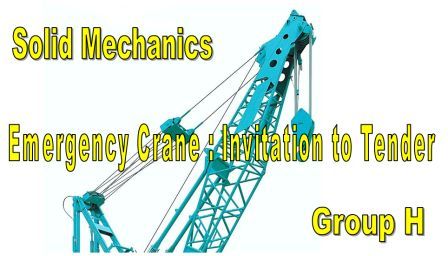What are Cranes?A crane is a lifting machine, generally equipped with a winder (also called a wire rope drum), wire ropes or chains and sheaves that can be used both to lift and lower materials and to move them horizontally. It uses one or more simple machines to create mechanical advantage and thus move loads beyond the normal capability of a human (in this case more than 1000kg).
So to get ideas of what sort of an ideal crane to model we will look at different types of mobility cranes.
Truck-mounted cranes: these are cranes mounted on trucks. This eliminates special needs for the crane to be transported by special equipment. Can lift loads ranging from 14.5 tonnes to 1300 tonnes.
Side lift cranes: A side lifter crane is a road-going truck or semi-trailer, able to hoist and transport ISO standard containers. Container lift is done with parallel crane-like hoists, which can lift a container from the ground or from a railway vehicle.
Rough terrain cranes: A crane mounted on an undercarriage with four rubber tires that is designed for pick-and-carry operations and for off-road and "rough terrain" applications. Outriggers are used to level and stabilize the crane for hoisting. Load range is normally about 70 tonnes.
All terrain cranes: A mobile crane with the necessary equipment to travel at speed on public roads, and on rough terrain at the job site using all-wheel and crab steering. This is a classic model combination of good manoeuvrability along rough grounds and good mobility on roads.
Crawler cranes: A crawler is a crane mounted on an undercarriage with a set of tracks (also called crawlers) that provide stability and mobility. Crawler cranes range in lifting capacity from about 40 tonnes to 3500 tonnes. However, because of the crawlers and crane, the machinery is very heavy and this comes as a disadvantage due to its limitation in movement and would have to be disassembled if in need of working at other job sites.
After looking at all these different types of cranes, we can say that we can take the best attributes from all these and model a smaller and portable crane capable of delivering to the recommended specifications.
Good attributes from all these cranes will include:
• The ability to move around on site and perform each lift with little set-up, since the crane is stable on its tracks with no outriggers. In addition, a crawler crane is capable of travelling with a load (crawler cranes).
• Able to travel on main roads and highways. This additional flexibility makes it possible to transport large loads and access a wide range of locations (All terrain cranes)
• Quick and easy mobility on roads and not slowed down cranes mounted on the trucks (Truck- mounted cranes and side lift cranes).
• Have outriggers which help provide stability when lift or hoisting loads (side lift cranes).
• Spotters are used to ensure that the load to be lifted is properly installed.















